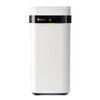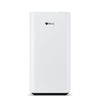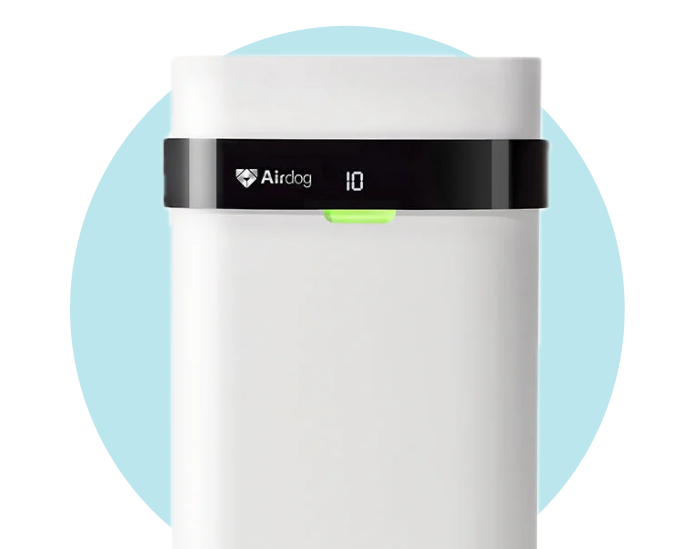Did you know that the air inside your home could be more polluted than the air outside? This statement often surprises many, yet it's a reality faced by households worldwide. The culprits behind this indoor pollution are volatile organic compounds, or VOCs, which lurk in the most unsuspecting places—from the paint on your walls to the cleaning supplies in your cupboard.
Exposure to high levels of VOCs can lead to a range of health issues, including respiratory problems, headaches, and even long-term effects on your health. With the average person spending a significant amount of time indoors, particularly in the current era of remote work and home-based leisure, understanding and managing the levels of VOCs in our homes has never been more critical.
Identifying Sources of VOCs in Your Home
Understanding where VOCs originate within our homes is the first step towards mitigating their presence and protecting our indoor air quality. From the paint on our walls to the fuel stored in our garages, VOCs can emanate from numerous, often surprising sources. Recognizing and managing these sources are crucial for a healthier home environment.
Home Improvement Products
-
Paints, Varnishes, and Solvents: These products are notorious for their VOC emissions, particularly during application and drying. Opting for low-VOC or VOC-free options significantly reduces exposure.
-
Water-based paints over solvent-based ones
-
Sealants and finishes labeled as low-VOC
Household Cleaning Agents
-
Cleaning Supplies: Many conventional cleaners contain chemicals that release VOCs into your home's air. Switching to natural cleaning solutions can dramatically lower indoor VOC levels.
-
Vinegar, baking soda, and lemon as cleaning alternatives
-
Eco-friendly, certified cleaning products
Air Fresheners and Upholstered Furniture
-
Fragranced Products and Furniture: The pleasant smell of air fresheners and the comfort of new furniture can come with a hidden cost—VOC emissions.
-
Opt for natural fragrances, like essential oils
-
Select furniture made with natural materials
Storage of Fuels and Automotive Products
-
Garage Stored Products: Fuels, automotive products, and other chemicals stored in attached garages can seep into living spaces, introducing VOCs.
-
Properly seal containers and store them in detached sheds or areas
-
Regularly ventilate the garage to reduce VOC concentration
The comprehensive guide at soapfreeprocyon.com emphasizes the importance of not only identifying these sources but also taking proactive steps to minimize their impact. By addressing each of these areas, homeowners can significantly reduce the VOC burden in their homes, leading to cleaner air and healthier living environments.
Practical Steps to Reduce VOC Emissions
Reducing VOC emissions within our homes requires a multifaceted approach, targeting everything from the choice of home improvement products to the way we clean and maintain our living spaces. Here are actionable strategies every homeowner can implement to minimize VOC sources and safeguard their indoor environment.
Choose Low-VOC or VOC-Free Products
When it comes to selecting paints and home improvement materials, the choices we make can significantly impact the air quality within our homes.
-
Paint Selection: Opt for low-VOC or VOC-free paints. Many brands now offer a wide range of color options in these healthier alternatives without sacrificing quality.
-
Building Materials: Choose materials like plywood, MDF, and insulation that are certified as low-VOC. These materials are essential for reducing exposure, especially during renovations.
Adopt Natural Cleaning Alternatives
The cleaning products we use are among the most significant sources of indoor VOCs. However, effective alternatives can help maintain a clean home without the added VOCs.
-
Vinegar and Baking Soda: These pantry staples are effective in a variety of cleaning tasks, from deodorizing to scouring, without introducing harmful chemicals into your home.
-
Essential Oils: For those who miss the fresh scent of traditional cleaners, essential oils offer a natural alternative that can be added to homemade cleaning solutions.
Maintain HVAC Systems and Use High-Quality Filters
HVAC systems play a pivotal role in maintaining indoor air quality, capturing airborne VOCs, and ensuring they are not recirculated throughout our homes.
-
Regular Maintenance: Schedule annual inspections and maintenance to keep your HVAC system running efficiently and effectively.
-
High-Quality Filters: Invest in high-efficiency air filters capable of trapping smaller particles, including VOCs. Replace these filters every three months, or as recommended by the manufacturer, to ensure optimal air quality. Certain air purifier technology (like Airdog’s TPA® Technology) has the capability of capturing and destroying harmful air particles as small as 0.0146 microns, capturing VOCs as well as harmful viruses like influenza, rhinovirus, smog and other ultrafine particulates.
Proper Storage and Disposal of Chemicals
How we store and dispose of chemicals can prevent unnecessary VOC accumulation in our homes. Following guidelines for safe storage and disposal is crucial.
-
Proper Storage: Ensure all chemicals, including paints, solvents, and cleaners, are tightly sealed and stored in well-ventilated areas, ideally outside of the living space such as a shed or detached garage.
-
Safe Disposal: Follow local guidelines for the disposal of hazardous materials. Websites like ewr1.vultrobjects.com/big-foot-dumpsters-and-removal offer detailed advice on how to dispose of or recycle hazardous waste responsibly.
By choosing safer products, adopting natural cleaning methods, maintaining our HVAC systems, and properly storing and disposing of chemicals, we can significantly reduce our exposure to harmful VOCs and protect the well-being of our families.
Improving Ventilation to Dilute VOC Concentrations
Improving the ventilation in your home plays a pivotal role in reducing the concentrations of Volatile Organic Compounds (VOCs). By enhancing air exchange and incorporating nature’s own air purifiers, you can create a healthier living environment for you and your loved ones.
Enhancing Air Exchange
Open Windows and Doors: The simplest yet most effective method to facilitate air exchange is by opening windows and doors. This practice allows fresh air to circulate throughout your home, diluting the concentrations of VOCs.
-
Strategic Venting: Open windows opposite each other to create a cross-flow of air, which helps in effectively removing stagnant air containing VOCs.
-
Use of Exhaust Fans: Install and use exhaust fans, particularly in high humidity areas like kitchens and bathrooms, to expel air contaminated with VOCs outside.
Incorporating Plants that Absorb VOCs
Plants not only add aesthetic value to your home but also play a crucial role in absorbing VOCs. They act as natural air purifiers by taking in VOCs through the process of photosynthesis.
-
Spider Plant: Known for its ability to absorb carbon monoxide and xylene.
-
Peace Lily: Effective against ammonia, benzene, formaldehyde, and trichloroethylene.
-
Boston Fern: Great at removing formaldehyde and xylene from the air.
Incorporating a variety of these plants throughout your home can enhance your indoor air quality naturally.
Installing Trickle Vents and Window Fans
For a more controlled ventilation strategy, the installation of trickle vents and the use of window fans can maintain a constant flow of fresh air, even when windows are closed.
-
Trickle Vents: These are small vents installed at the top of windows that allow fresh air to trickle into the home without compromising security or causing significant heat loss.
-
Window Fans: Positioned in windows, these fans can be set to either draw fresh air into the home or expel stale air out, depending on your needs.
Both these methods provide a steady exchange of indoor and outdoor air, reducing the concentration of VOCs inside your home.
Leveraging Mechanical Ventilation
In addition to natural methods, mechanical ventilation systems can significantly improve indoor air quality. Systems like Heat Recovery Ventilators (HRVs) and Energy Recovery Ventilators (ERVs) not only exchange indoor and outdoor air but also retain heat or coolness, making them energy-efficient options for maintaining optimal air quality.
-
HRVs and ERVs: These systems are particularly beneficial in tightly sealed homes, where natural ventilation is limited, by ensuring a constant exchange of air without significant energy loss.
By implementing these strategies, from the simple act of opening windows to the installation of advanced ventilation systems, you can significantly enhance the air quality in your home. Ensuring proper ventilation is a key step in diluting VOC concentrations and creating a safer, healthier environment for your family.
Selecting and Using Air Purifiers for VOC Removal
When it comes to ensuring the air in your home is free from harmful Volatile Organic Compounds (VOCs), not all air purifiers offer the same level of efficacy. Understanding the technology behind air purifiers and how they tackle VOCs is essential for making an informed choice that suits your home environment and health needs.
Why Activated Carbon Filters Outperform HEPA for VOC Removal
-
Absorption Capabilities: Activated carbon filters excel in trapping gas molecules, thanks to their highly porous nature. This makes them particularly effective for VOC removal, as they absorb the gases released by household items and materials.
-
Surface Area Advantage: The vast surface area of activated carbon provides a vast adsorption site for VOC molecules, unlike HEPA filters that primarily capture particulate matter.
Selecting the right air purifier involves understanding the specifics of how these filters work in various models to provide the cleanest possible environment for your family.
Comparing Air Purifier Effectiveness
When comparing air purifiers, consider models known for their substantial activated carbon filters. These models are more adept at capturing a wide range of VOCs, offering a cleaner indoor air experience.
-
Large Activated Carbon Filters: Look for purifiers with substantial activated carbon filters, as they have more capacity to absorb VOCs.
-
Combination Filters: Some air purifiers combine their filtration technology and activated carbon filters, offering a dual approach to air purification by capturing both particulate matter and VOCs.
Airdog’s Two-Pole Action (TPA®) Technology
While traditional purifiers rely on disposable, non-recyclable HEPA filters that can clog and slow down over time, Airdog’s advanced Two-Pole Action (TPA®) technology ensures a faster and more effective purification process that includes carbon filtration inside.
TPA® filters have the ability to eliminate particles as small as 0.0146 microns (20x smaller than the typical HEPA filter), capturing harmful viruses like influenza, rhinovirus, smog and other ultrafine particulates that HEPA filters cannot reliably capture.
In addition, Airdog’s filtration system is hand-washable. It doesn’t rely on non-recyclable, costly filter replacements. Learn more about Airdog’s filtration technology here.
Selecting Air Purifiers Based on Room Size and VOC Removal Efficiency
Choosing the right air purifier also depends on the size of your room and the specific VOC removal efficiency you need.
-
Room Size Consideration: Match the air purifier's capacity to the size of the room. Larger rooms require purifiers with higher Clean Air Delivery Rate (CADR) ratings.
-
VOC Removal Efficiency: Prioritize air purifiers with high efficiency in VOC removal. This information is often listed in the product specifications or reviews.
-
EPA's Guide: Draw on advice from the EPA's guide to air cleaners in the home to understand the optimal settings and specifications for VOC removal in residential spaces.
Maintenance Tips for Sustained VOC Removal Efficiency
Ensuring your air purifier continues to remove VOCs effectively requires regular maintenance.
-
Filter Replacement: Follow the manufacturer's guidelines on how often to replace the activated carbon filter. Over time, the filter becomes saturated and less effective at capturing VOCs.
-
Regular Cleaning: Keep the exterior and vents of the air purifier clean to maintain optimal airflow and efficiency.
-
Monitor Air Quality: Use an indoor air quality monitor to track VOC levels in your home. This can help you assess when to replace filters or adjust the settings on your air purifier.
By understanding the importance of activated carbon filters for VOC removal, comparing the effectiveness of different air purifiers, selecting a model based on your specific needs, and adhering to maintenance tips, you can significantly improve the air quality in your home.
Ongoing Monitoring and Management of Indoor VOC Levels
Introducing VOC Sensors and Indoor Air Quality Monitors
To safeguard your home's air quality against Volatile Organic Compounds (VOCs), equipping yourself with the right tools for detection is paramount. VOC sensors and indoor air quality monitors stand as your first line of defense, offering real-time data on the air you breathe daily.
-
VOC Sensors: These specialized devices detect the presence and concentration of various VOCs in your home environment. By placing them strategically, you can identify high-risk areas and take corrective actions.
-
Indoor Air Quality Monitors: Beyond VOC detection, these monitors provide comprehensive insights into particulate matter, humidity, and other pollutants contributing to indoor air quality. Leveraging this data ensures a holistic approach to air quality management.
Establishing a Routine for Inspection and Replacement
Maintaining optimal indoor air quality necessitates a disciplined approach to inspecting and replacing key components of your air purification system.
-
Regular Inspection: Schedule monthly checks on your air purifiers, HVAC systems, and ventilation units to identify any inefficiency or potential VOC sources.
-
Filter Replacement: Keep track of the lifespan of your air filters and purifier cartridges. Replacing them at recommended intervals prevents VOC accumulation and ensures the efficiency of your air purification systems. Airdog’s air purifiers use a washable filter, making it far easier and cost-effective than a typical air purifier replacement.
Consulting with Indoor Air Quality Professionals
For homes struggling with persistently high VOC levels, seeking expertise from indoor air quality professionals can provide tailored solutions to mitigate these challenges.
-
Expert Assessment: Professionals can conduct thorough assessments of your home, identifying hidden VOC sources and recommending specific remediation strategies.
-
Customized Solutions: Based on their assessment, experts can suggest modifications to your existing air purification setup or recommend additional measures to enhance VOC removal.
The Importance of Continuous Awareness and Proactive Management
Resources like lung.org highlight the significance of being proactive in managing indoor VOC levels. Awareness and timely action can drastically reduce the health risks associated with prolonged VOC exposure.
-
Educational Resources: Inform yourself and your family about the sources and potential health impacts of VOCs. Knowledge empowers you to make healthier choices regarding household products and renovations.
-
Routine Monitoring: Make indoor air quality monitoring part of your regular home maintenance schedule. This proactive approach allows for immediate detection and action on any air quality degradation.
By adopting these strategies for ongoing monitoring and management of indoor VOC levels, you contribute significantly to creating and maintaining a healthier living environment. Continuous awareness and proactive management not only ensure the well-being of your family but also preserve the integrity of your home as a safe haven against environmental pollutants.





